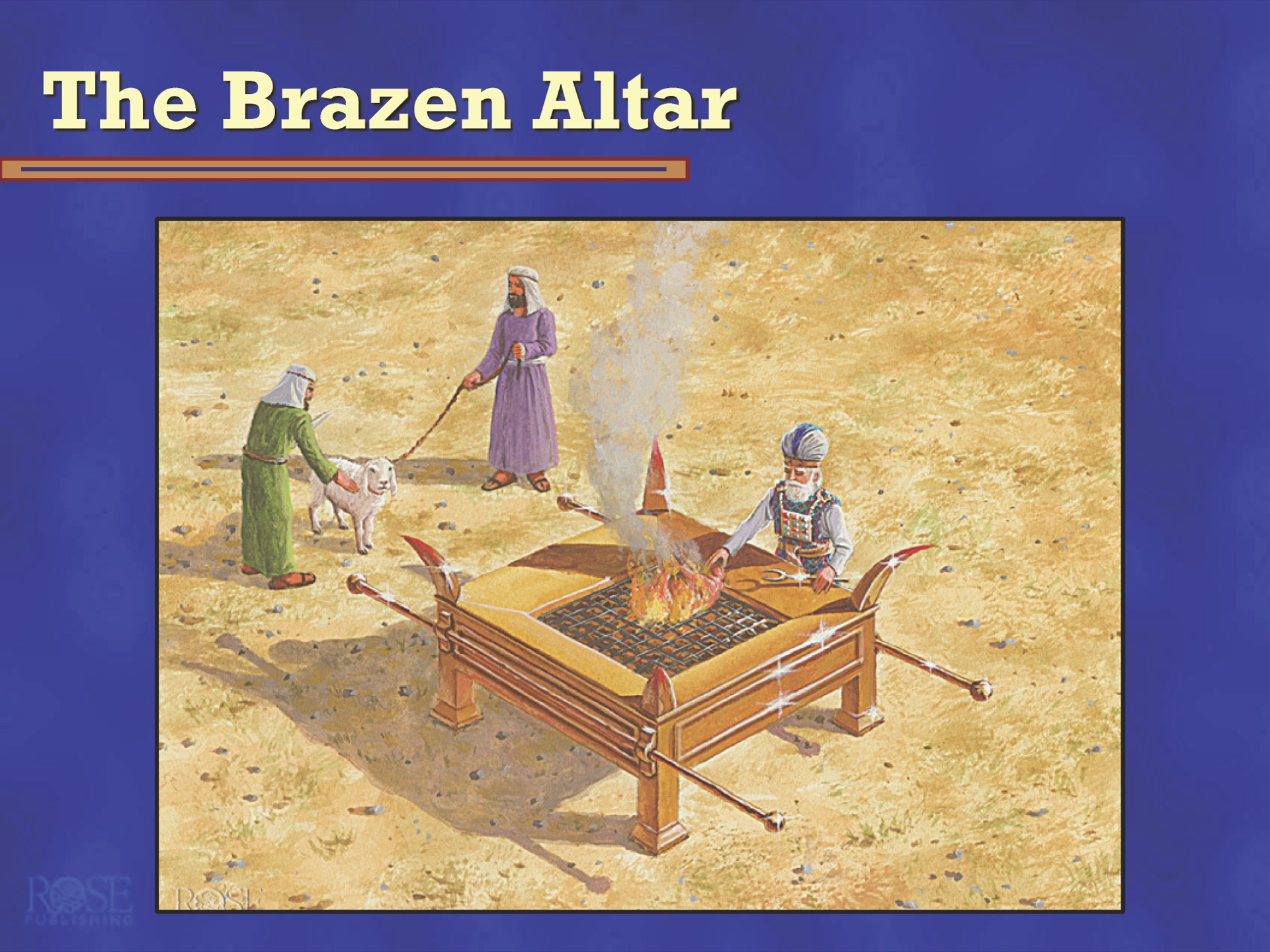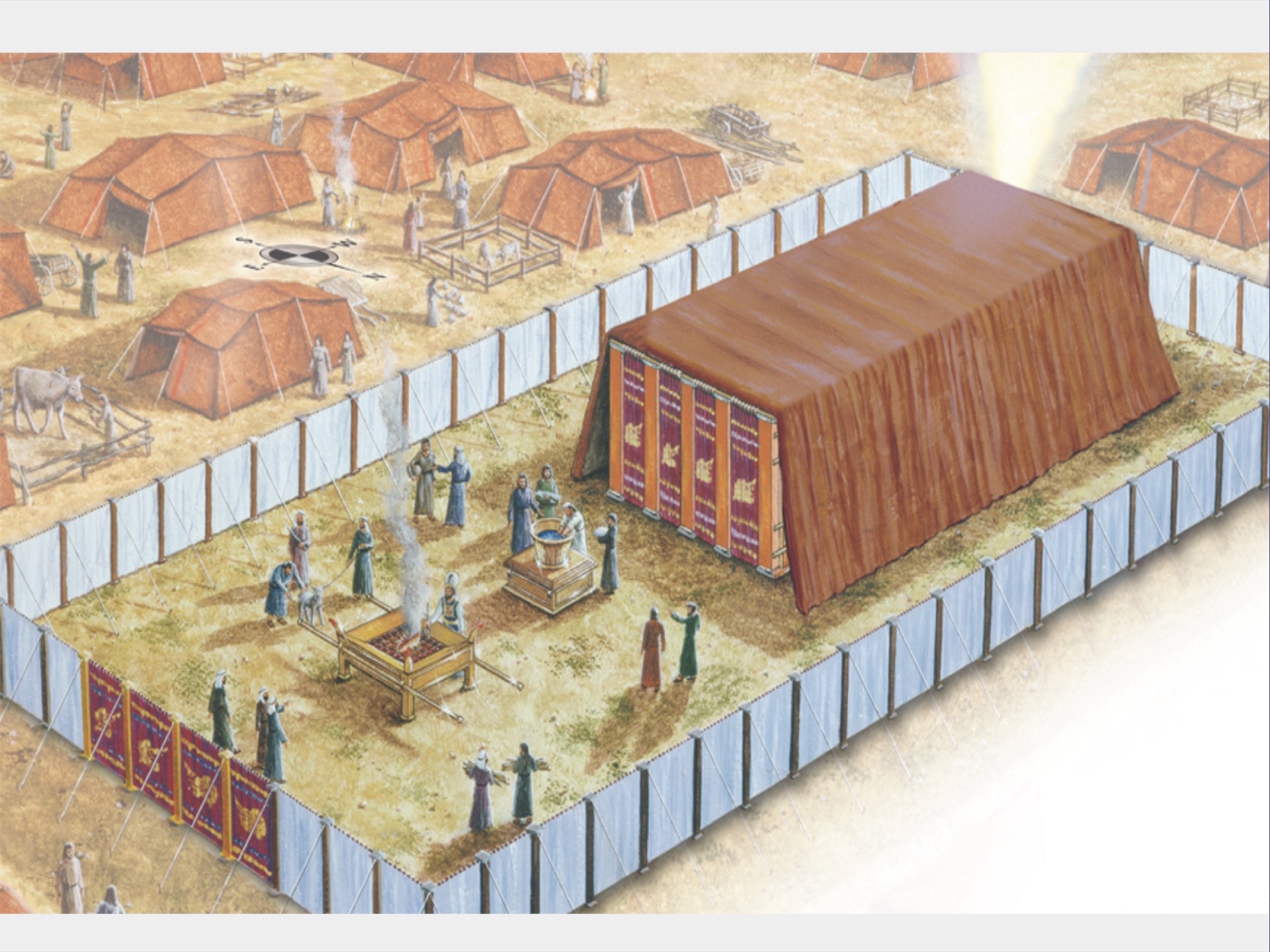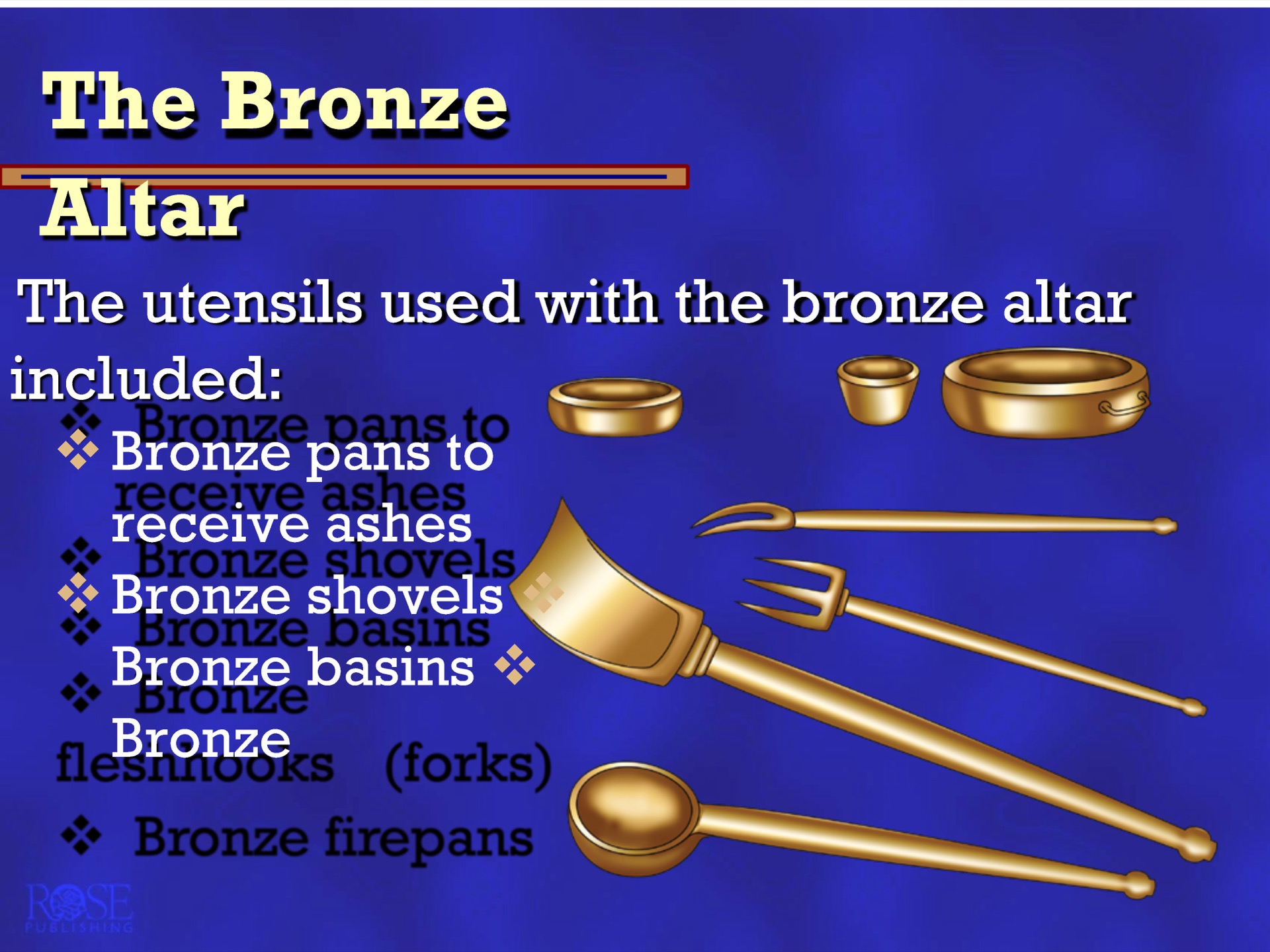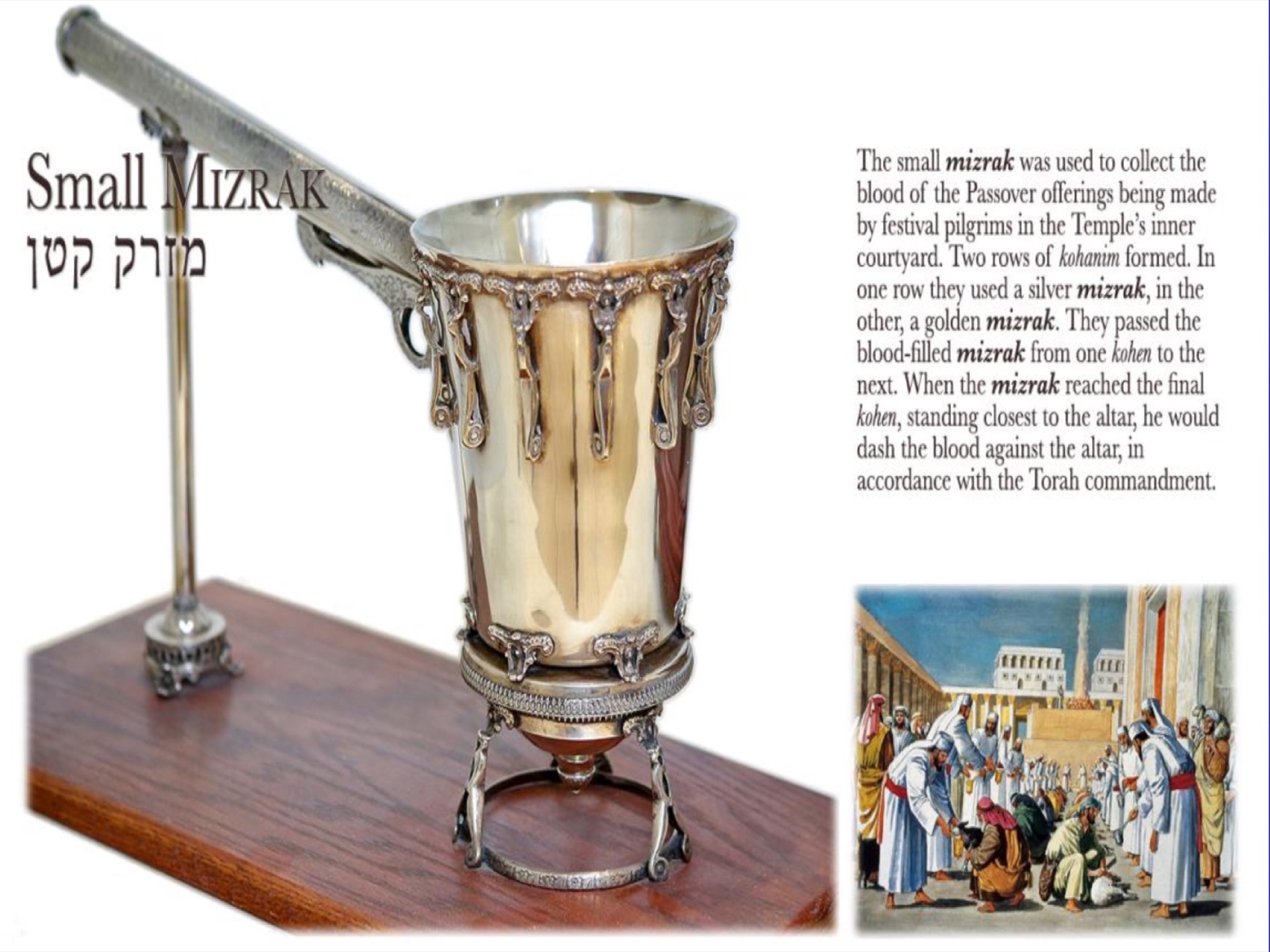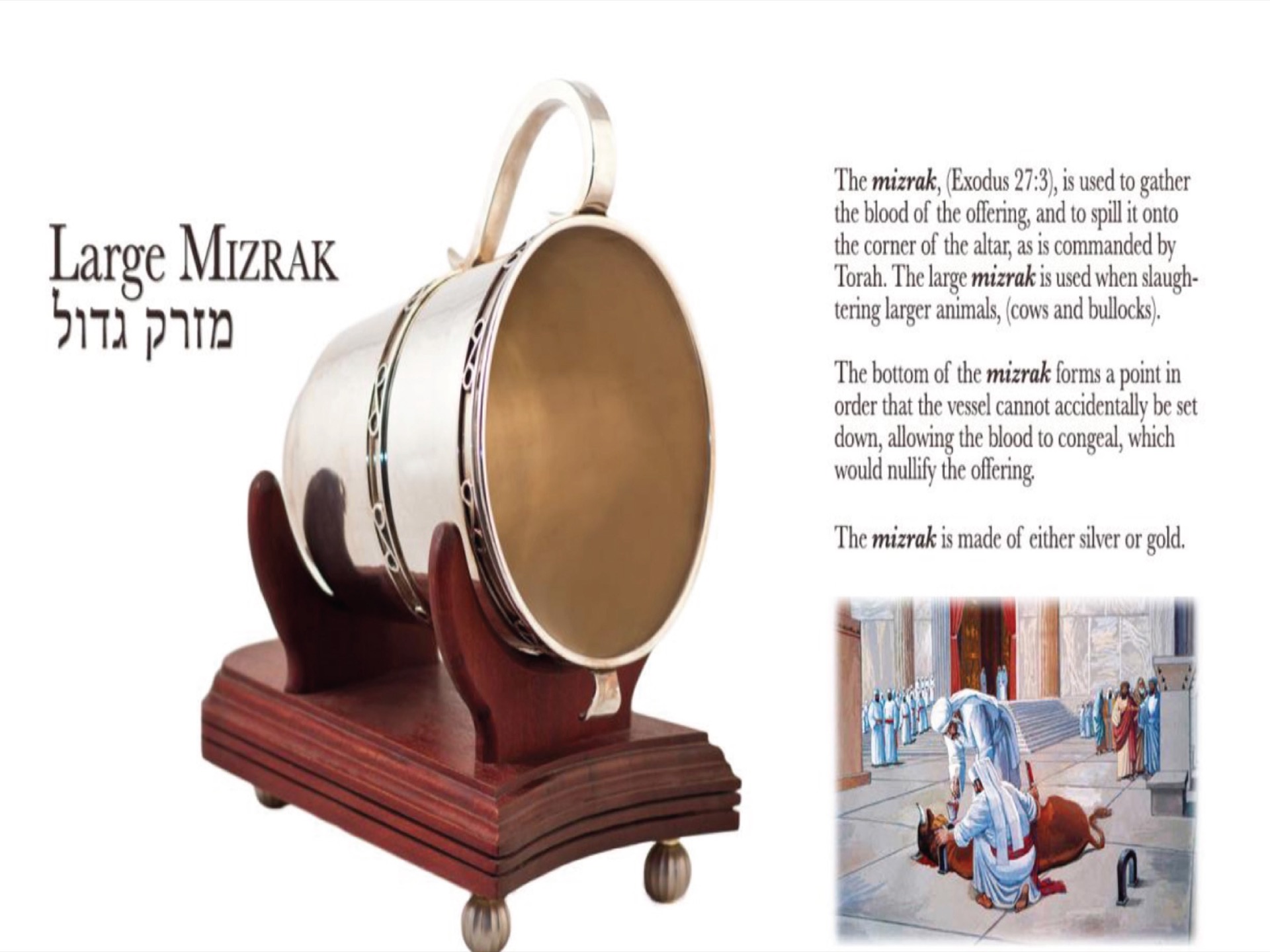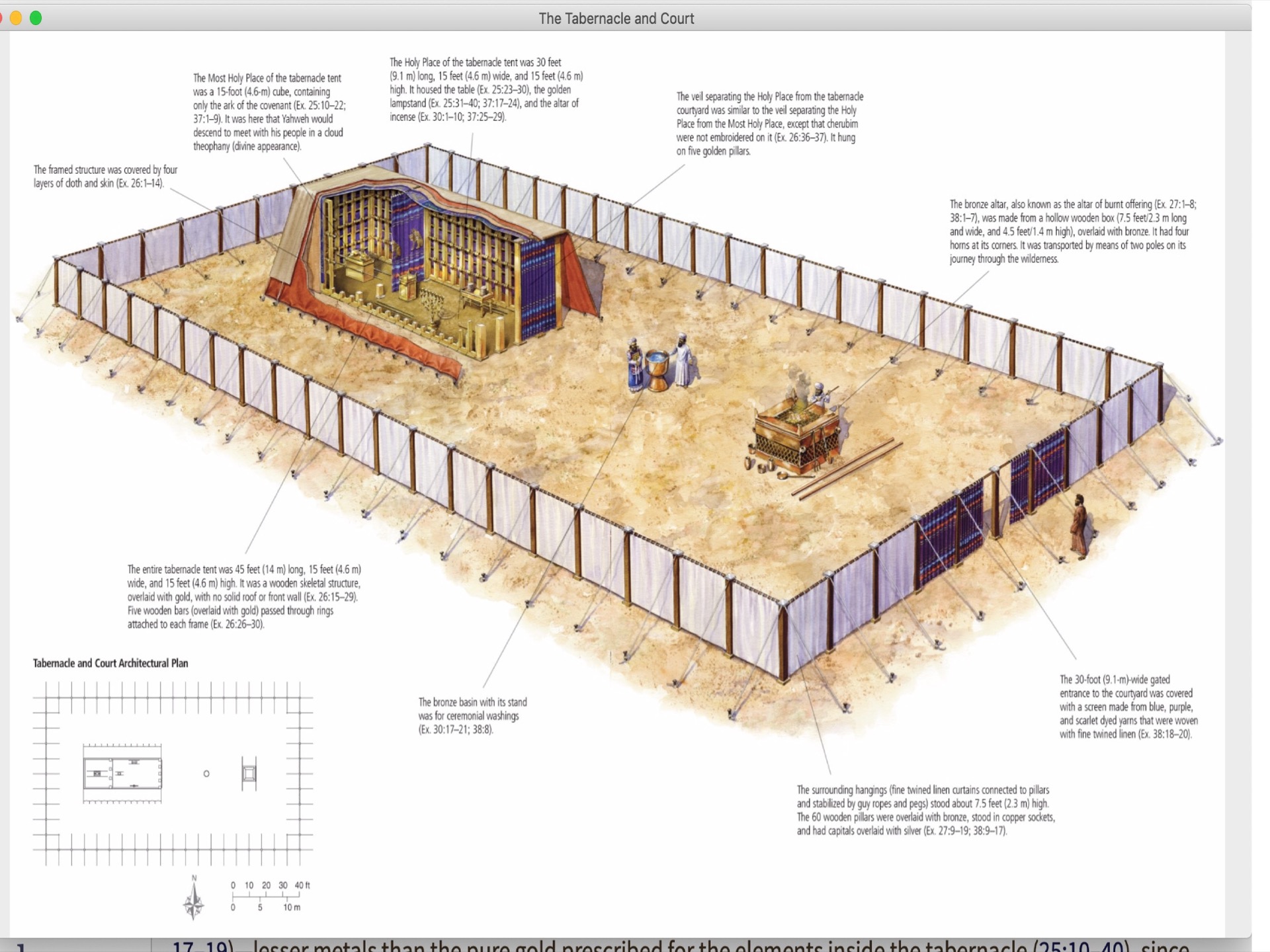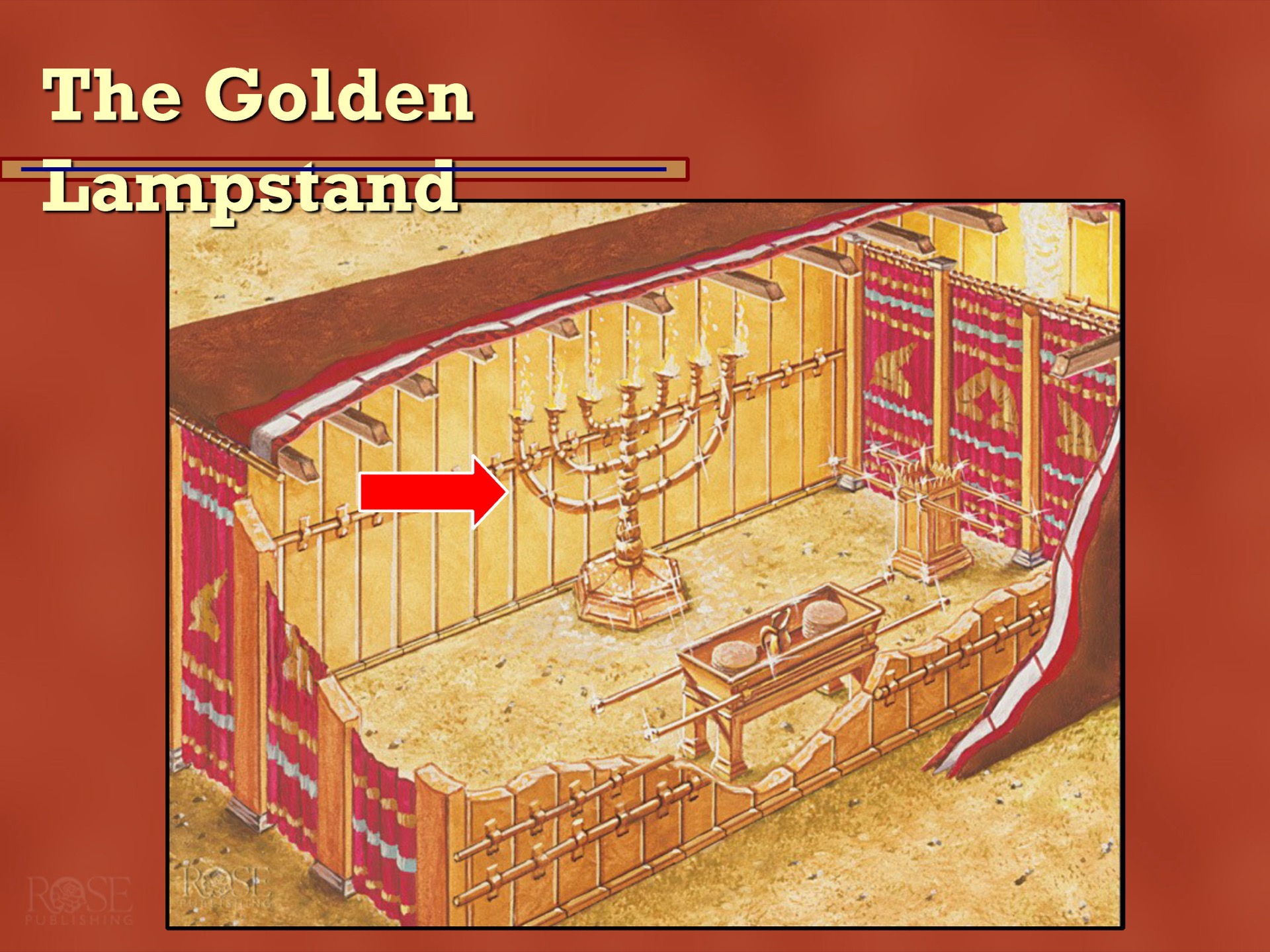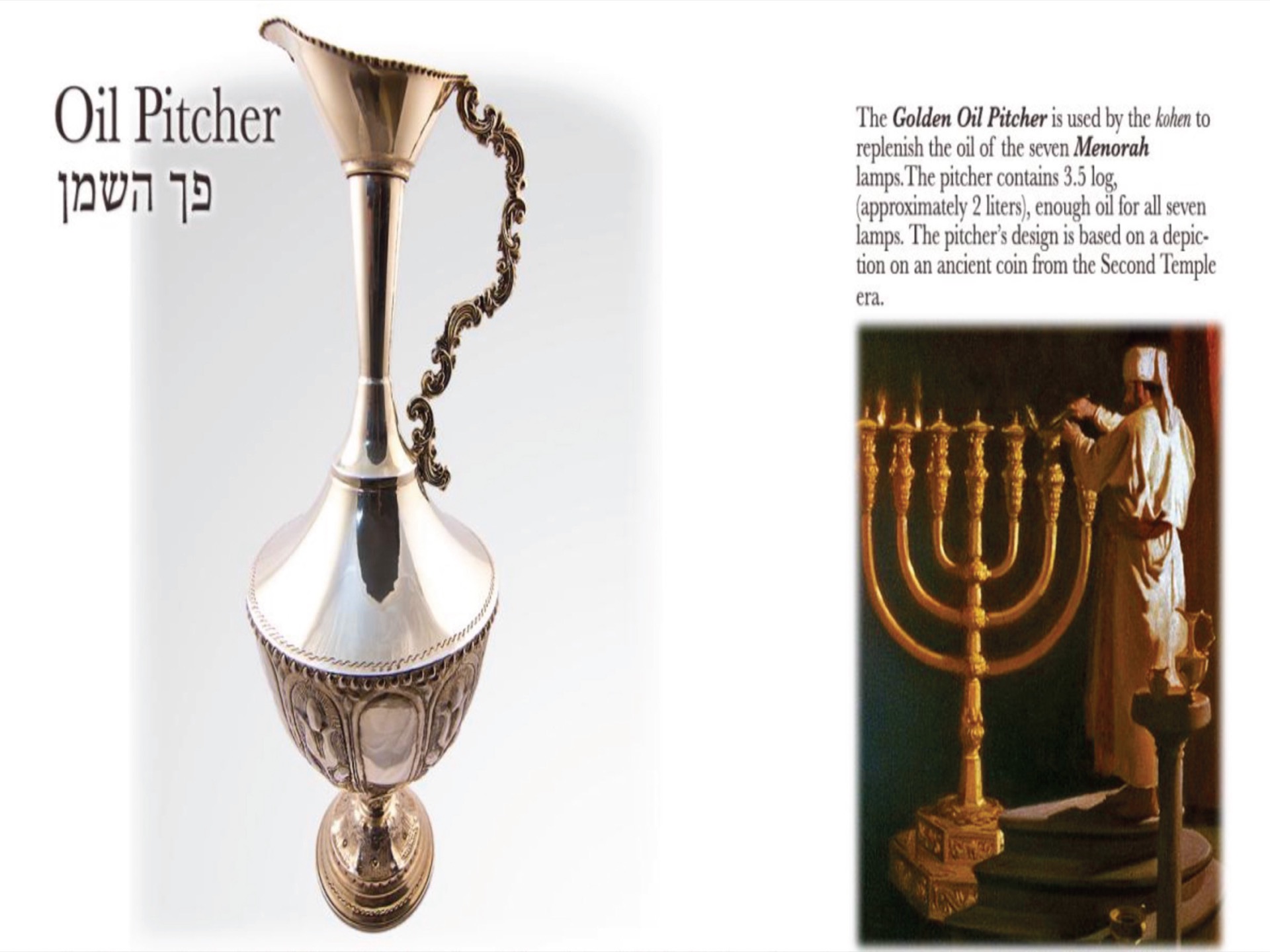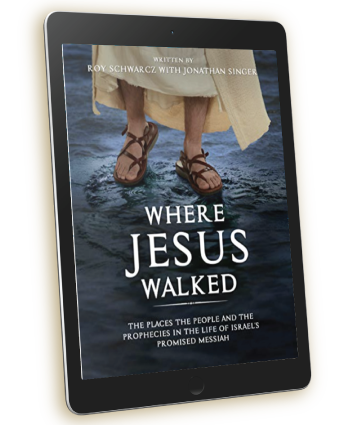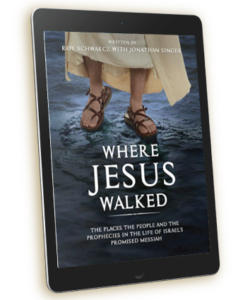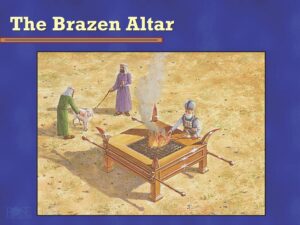
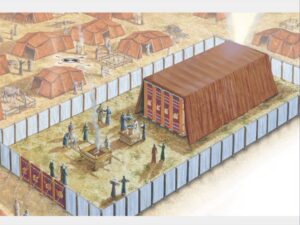
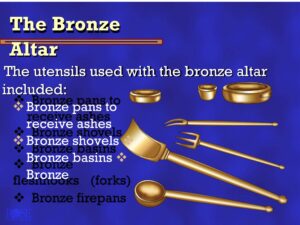
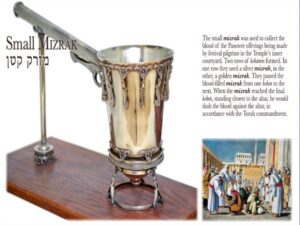
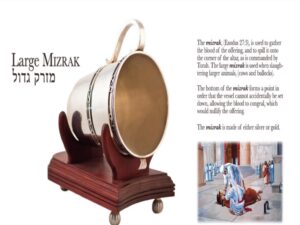
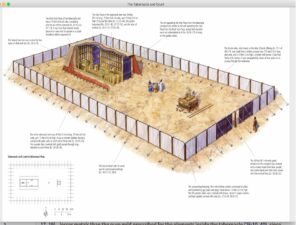
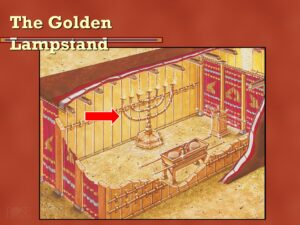
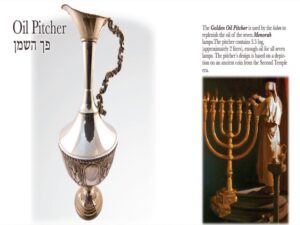
27:1-8 The brazen altar also known as the “altar of burnt offering” (Lev. 4:7 10 18) was the largest piece of equipment placed in the courtyard of the tabernacle. It was 7 ½ feet square and 4 ½ feet tall. It was covered, not in gold as the items inside the Holy Place, but in bronze Illus. 1 & 2). Like the other pieces it was also built to be carried by poles. All the altar’s utensils and accessories were also made of bronze, not gold. The bronze altar was made of shittim (acacia) wood. The four corners of the altar had horns overlaid with bronze. In addition, there were to be fashioned pans to receive ashes, shovels, basins, meathooks or forks and firepans all made of bronze.
Several kinds of offerings were made on the brazen or brass altar these included bulls, sheep, goats without blemish, birds (Leviticus 1:1-17). Special vessels were designed for offering this blood (Illus. 4-5). Other offerings were grain (Leviticus 2:1-16); Peace (goat or lamb; Lev. 3:1-17); Sin (bull, goat, or lamb; Lev. 4:1-35); Trespass (female of the flock, lamb, goat kid, bird or grain; Lev. 5 & 6)
27:9–11 Next God commanded Moses to have the skilled men construct the courtyard that formed a perimeter around the tabernacle. The courtyard had longer sides measuring one hundred cubits, and the shorter sides fifty cubits. The material of the curtains were of finely twisted linen, held by twenty posts on each side standing on bronze bases. The posts contained silver hooks and bands on the posts to hold it together.
27:12–15. Both the west and east ends of the tabernacle measured fifty cubits long and contained ten posts with bases and curtains. The front was divided into two separate sidepieces, each measuring fifteen cubits in length and hung over three posts and bases.
27:16–19. The entrance curtain was twenty cubits long, standing on four posts with four bases, made of blue, purple, and scarlet-colored yarn. The posts supported rods, to connect the structure, made of silver. The posts also contained silver hooks and stood on bronze bases. The tools used in putting up and taking down the tabernacle and any other articles were to be made of bronze. The courtyard illustrated that sin restricted man’s access to God. The altar of sacrifice was the first item as one entered the courtyard, which no ordinary Israelite could go. They could approach God only through the priests, who offered the sacrifices.
27:20-21 Oil for the Lamp. Since the Lord did not slumber as men, the oil in the Lamp was a reminder that He neither slumbers nor sleeps and so the lamps burned 24 hours. It provided earthly light in the Holy Place (Illus. 7). While Heavenly light illuminated the Holy of Holies. One of the types of contributions God’s people could be make was olive oil, pressed and filtered through fabrics to produce clear oil that would burn brightly in the seven gold lamps of the lampstand that stood in the holy place (25:31–40). The priests had the duty assigned that there was enough oil in the lamps and adequate wicks, so that the lamps would burn brightly day and night.
The lampstand was made of one talent (125 pounds) of pure hammered gold, in one solid piece. It had a central shaft with six branches, three on each side, making it a seven-branched lampstand. Each branch had knobs, flowers, and an almond-shaped bowl to hold pure olive oil.
The lampstand was the first item seen when entering the Tabernacle as a reminder to his priests that God is light. The Word of God is a light for God’s people. It guides them through life and protects them from evil and darkness. (Psalm 119:105). The Bible says that Yeshua is God’s Word in human form. (John 1:1, 14) Jesus referred to himself as the light of the world and those who follow him will never walk in darkness (John 8:12; 9:5; 12:46). The light of Messiah lives inside believers and are God’s light (witness) to the world. (John 12:46).

